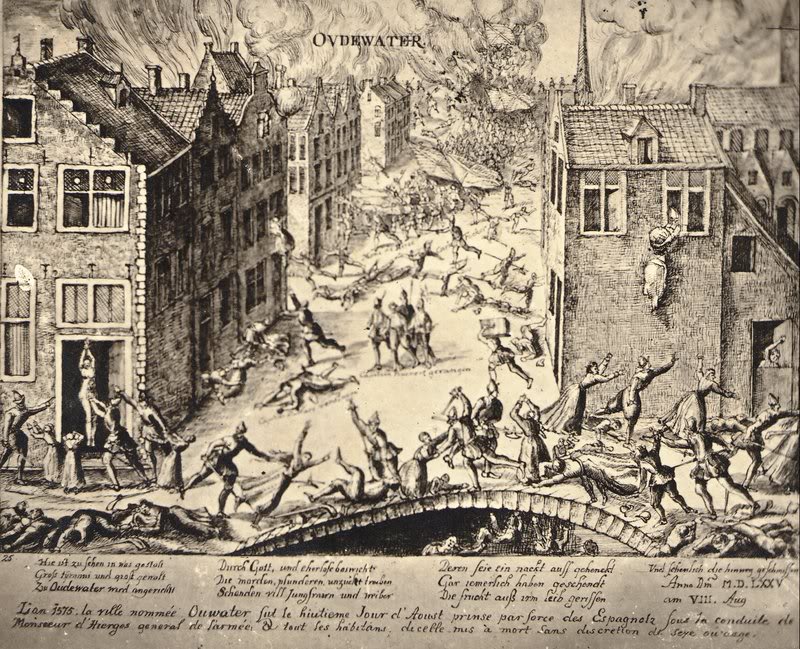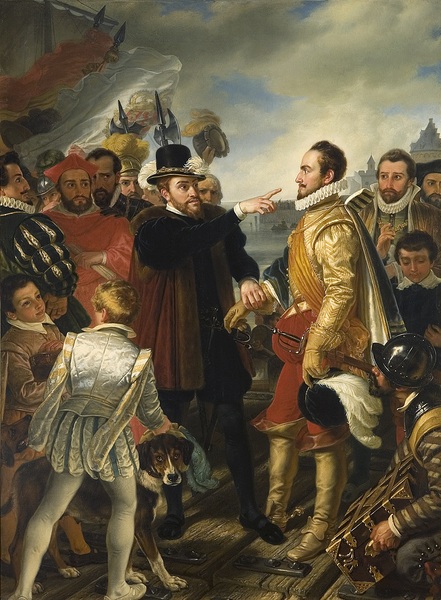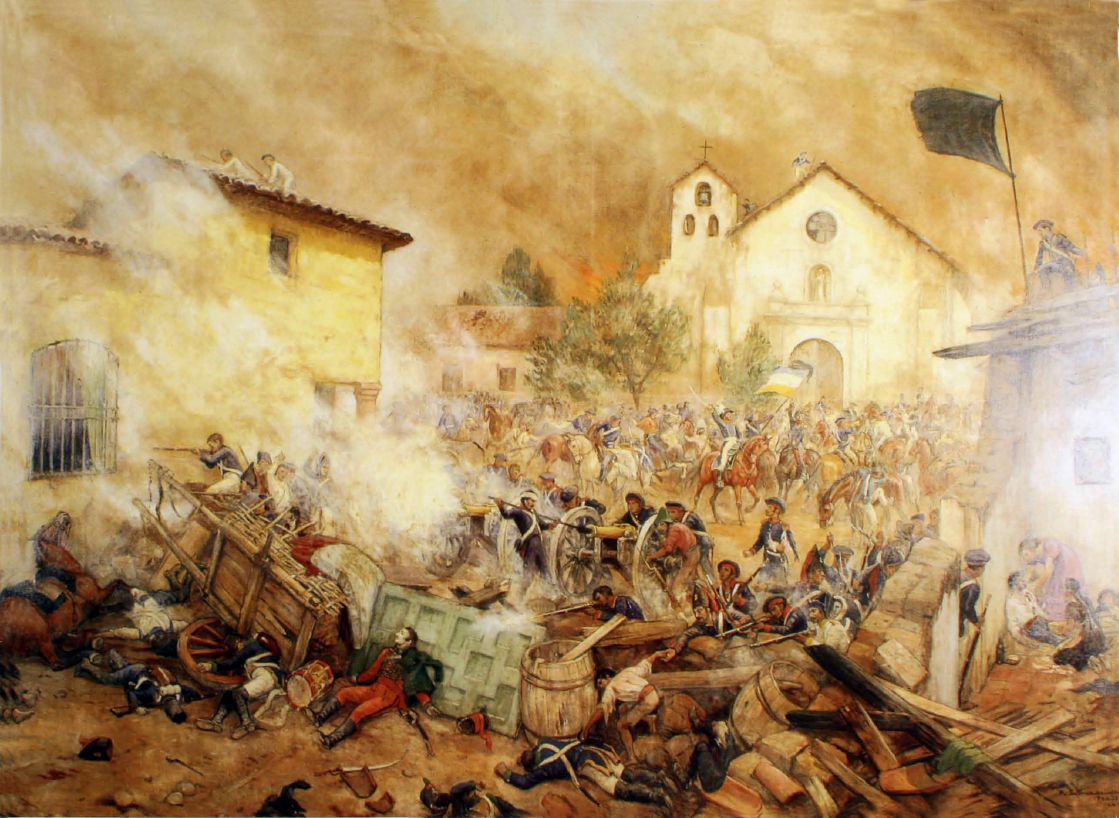|
Siege Of Oudewater (1575)
The siege of Oudewater was an event during the Eighty Years' War that took place in the Dutch town of Oudewater, culminating in the Oudewater Massacre ( ''Oudewaterse moord''). The siege by Spanish troops started on 19 July 1575 and ended on 7 August 1575, when the town was taken by storm and plundered. Background In 1568 a garrison of the Spanish Army was stationed in Oudewater. On 19 June 1572 Adriaen van Swieten, a nobleman and deputy of William of Orange, entered the town with a small number of troops and convinced it to join the Dutch Revolt against Philip II of Spain. Siege and massacre The siege by Spanish troops under command of stadtholder Gillis van Berlaymont Gilles van Berlaymont (c. 1545 – 18 June 1579 in Maastricht) was stadtholder for the Spanish Crown of Drenthe, Friesland, Groningen and Overijssel (1572-1573), stadtholder of Guelders (1572–1577), substitute stadtholder of Holland, Zeelan ... started on 19 July 1575 and ended in a bloodbath on 7 ... [...More Info...] [...Related Items...] OR: [Wikipedia] [Google] [Baidu] |
Oudewater Moord
Oudewater () is a municipality and a town in the Netherlands. History The origin of the town of Oudewater is obscure and no information has been found concerning the first settlement of citizens. It is also difficult to recover the name of Oudewater. One explanation is that the name is a corruption of ''old water-meadow''. Oudewater was an important border city between Holland and Utrecht. Oudewater (lit. "Old water") was of great strategic importance. The town was granted city rights in 1265 by Hendrik van Vianden, the bishop of Utrecht. Oudewater took its place in the First Free States council in Dordrecht on 19 July 1572, Oudewater was one of the twelve cities taking part in the first free convention of the States General in Dordrecht. This was a meeting that laid down the origin of the State of the Netherlands, as we know it now, under the leadership of the House of Orange. This happened at the beginning of the Eighty Years' War (1568–1648) when the Netherlands were s ... [...More Info...] [...Related Items...] OR: [Wikipedia] [Google] [Baidu] |
William The Silent
William the Silent (24 April 153310 July 1584), also known as William the Taciturn (translated from nl, Willem de Zwijger), or, more commonly in the Netherlands, William of Orange ( nl, Willem van Oranje), was the main leader of the Dutch Revolt against the Spanish Habsburgs that set off the Eighty Years' War (1568–1648) and resulted in the formal independence of the United Provinces in 1648. Born into the House of Nassau, he became Prince of Orange in 1544 and is thereby the founder of the Orange-Nassau branch and the ancestor of the monarchy of the Netherlands. In the Netherlands, he is also known as Father of the Fatherland ('' Pater Patriae'') ( nl, Vader des Vaderlands). A wealthy nobleman, William originally served the Habsburgs as a member of the court of Margaret of Parma, governor of the Spanish Netherlands. Unhappy with the centralisation of political power away from the local estates and with the Spanish persecution of Dutch Protestants, William joined the ... [...More Info...] [...Related Items...] OR: [Wikipedia] [Google] [Baidu] |
1575 In The Holy Roman Empire
__NOTOC__ Year 1575 ( MDLXXV) was a common year starting on Saturday (link will display the full calendar) of the Julian calendar. Events January–June * January 21 – Queen Elizabeth I of England grants a monopoly on producing printed sheet music, to Thomas Tallis and William Byrd. * February 8 – William I of Orange founds Leiden University. * February 13 – Henry III of France is crowned at Reims. * February 14 – Henry III of France marries Louise de Lorraine-Vaudémont. * March 3 – Battle of Tukaroi: The Mughal Empire decisively defeats the Karrani dynasty of Bengal. * June 24 – William I of Orange marries Charlotte of Bourbon. * June 28 – Battle of Nagashino: Oda Nobunaga defeats Takeda Katsuyori in Japan's first ''modern'' battle. July–December * July 7 – Raid of the Redeswire: Sir John Carmichael defeats Sir John Forster, in the last battle between England and Scotland. * July 26 – Edmund G ... [...More Info...] [...Related Items...] OR: [Wikipedia] [Google] [Baidu] |
Sieges Involving Spain
A siege is a military blockade of a city, or fortress, with the intent of conquering by attrition, or a well-prepared assault. This derives from la, sedere, lit=to sit. Siege warfare is a form of constant, low-intensity conflict characterized by one party holding a strong, static, defensive position. Consequently, an opportunity for negotiation between combatants is common, as proximity and fluctuating advantage can encourage diplomacy. The art of conducting and resisting sieges is called siege warfare, siegecraft, or poliorcetics. A siege occurs when an attacker encounters a city or fortress that cannot be easily taken by a quick assault, and which refuses to surrender. Sieges involve surrounding the target to block the provision of supplies and the reinforcement or escape of troops (a tactic known as " investment"). This is typically coupled with attempts to reduce the fortifications by means of siege engines, artillery bombardment, mining (also known as sapping), or the u ... [...More Info...] [...Related Items...] OR: [Wikipedia] [Google] [Baidu] |
1570s In The Habsburg Netherlands
Year 157 ( CLVII) was a common year starting on Friday (link will display the full calendar) of the Julian calendar. At the time, it was known as the Year of the Consulship of Civica and Aquillus (or, less frequently, year 910 ''Ab urbe condita''). The denomination 157 for this year has been used since the early medieval period, when the Anno Domini calendar era became the prevalent method in Europe for naming years. Events By place Roman Empire *A revolt against Roman rule begins in Dacia. Births * Gaius Caesonius Macer Rufinianus, Roman politician (d. 237) * Hua Xin, Chinese official and minister (d. 232) * Liu Yao, Chinese governor and warlord (d. 198) * Xun You, Chinese official and statesman (d. 214 Year 214 ( CCXIV) was a common year starting on Saturday (link will display the full calendar) of the Julian calendar. At the time, it was known as the Year of the Consulship of Messalla and Suetrius (or, less frequently, year 967 ''Ab urbe con ...) Deaths ... [...More Info...] [...Related Items...] OR: [Wikipedia] [Google] [Baidu] |
Sieges Of The Eighty Years' War
A siege is a military blockade of a city, or fortress, with the intent of conquering by attrition, or a well-prepared assault. This derives from la, sedere, lit=to sit. Siege warfare is a form of constant, low-intensity conflict characterized by one party holding a strong, static, defensive position. Consequently, an opportunity for negotiation between combatants is common, as proximity and fluctuating advantage can encourage diplomacy. The art of conducting and resisting sieges is called siege warfare, siegecraft, or poliorcetics. A siege occurs when an attacker encounters a city or fortress that cannot be easily taken by a quick assault, and which refuses to surrender. Sieges involve surrounding the target to block the provision of supplies and the reinforcement or escape of troops (a tactic known as " investment"). This is typically coupled with attempts to reduce the fortifications by means of siege engines, artillery bombardment, mining (also known as sapping), or the u ... [...More Info...] [...Related Items...] OR: [Wikipedia] [Google] [Baidu] |
States Of Holland
The States of Holland and West Frisia ( nl, Staten van Holland en West-Friesland) were the representation of the two Estates (''standen'') to the court of the Count of Holland. After the United Provinces were formed — and there no longer was a count, but only his "lieutenant" (the stadtholder) — they continued to function as the government of the County of Holland. The nobility was normally represented by the Land's Advocate of Holland or Grand Pensionary of Holland, who combined the votes of the ten members of the '' Ridderschap'' (the "Knighthood") in the estates; the nobility was also supposed to represent all rural interest, including those of the farmers. The Commons consisted of representatives of eighteen cities, in ancient feudal order: eleven of the Southern Quarter: Dordrecht, Haarlem, Delft, Leyden, Amsterdam, Gouda, Rotterdam, Gorinchem, Schiedam, Schoonhoven and Brill; seven of the Northern West Frisian Quarter: Alkmaar, Hoorn, Enkhuizen, Edam, Mon ... [...More Info...] [...Related Items...] OR: [Wikipedia] [Google] [Baidu] |
Stadtholder
In the Low Countries, ''stadtholder'' ( nl, stadhouder ) was an office of steward, designated a medieval official and then a national leader. The ''stadtholder'' was the replacement of the duke or count of a province during the Burgundian and Habsburg period (1384 – 1581/1795). The title was used for the official tasked with maintaining peace and provincial order in the early Dutch Republic and, at times, became ''de facto'' head of state of the Dutch Republic during the 16th to 18th centuries, which was an effectively hereditary role. For the last half century of its existence, it became an officially hereditary role under Prince William IV of Orange. His son, Prince William V, was the last ''stadtholder'' of the republic, whose own son, William I of the Netherlands, became the first sovereign king of the United Kingdom of the Netherlands. The title ''stadtholder'' is roughly comparable to the historical titles of Lord Protector in England, Statthalter in the Holy Roma ... [...More Info...] [...Related Items...] OR: [Wikipedia] [Google] [Baidu] |
Philip II Of Spain
Philip II) in Spain, while in Portugal and his Italian kingdoms he ruled as Philip I ( pt, Filipe I). (21 May 152713 September 1598), also known as Philip the Prudent ( es, Felipe el Prudente), was King of Spain from 1556, King of Portugal from 1580, and King of Naples and Sicily from 1554 until his death in 1598. He was '' jure uxoris'' King of England and Ireland from his marriage to Queen Mary I in 1554 until her death in 1558. He was also Duke of Milan from 1540. From 1555, he was Lord of the Seventeen Provinces of the Netherlands. The son of Emperor Charles V and Isabella of Portugal, Philip inherited his father's Spanish Empire in 1556 and succeeded to the Portuguese throne in 1580 following a dynastic crisis. The Spanish conquests of the Inca Empire and of the Philippines, named in his honor by Ruy López de Villalobos, were completed during his reign. Under Philip II, Spain reached the height of its influence and power, sometimes called the Spanish Golden Age, ... [...More Info...] [...Related Items...] OR: [Wikipedia] [Google] [Baidu] |
Garrison
A garrison (from the French ''garnison'', itself from the verb ''garnir'', "to equip") is any body of troops stationed in a particular location, originally to guard it. The term now often applies to certain facilities that constitute a military base or fortified military headquarters. A garrison is usually in a city, town, fort, castle, ship, or similar site. "Garrison town" is a common expression for any town that has a military base nearby. "Garrison towns" ( ar, أمصار, amsar) were used during the Arab Islamic conquests of Middle Eastern lands by Arab-Muslim armies to increase their dominance over indigenous populations. In order to occupy non-Arab, non-Islamic areas, nomadic Arab tribesmen were taken from the desert by the ruling Arab elite, conscripted into Islamic armies, and settled into garrison towns as well as given a share in the spoils of war. The primary utility of the Arab-Islamic garrisons was to control the indigenous non-Arab peoples of these co ... [...More Info...] [...Related Items...] OR: [Wikipedia] [Google] [Baidu] |
Eighty Years' War
The Eighty Years' War or Dutch Revolt ( nl, Nederlandse Opstand) ( c.1566/1568–1648) was an armed conflict in the Habsburg Netherlands between disparate groups of rebels and the Spanish government. The causes of the war included the Reformation, centralisation, taxation, and the rights and privileges of the nobility and cities. After the initial stages, Philip II of Spain, the sovereign of the Netherlands, deployed his armies and regained control over most of the rebel-held territories. However, widespread mutinies in the Spanish army caused a general uprising. Under the leadership of the exiled William the Silent, the Catholic- and Protestant-dominated provinces sought to establish religious peace while jointly opposing the king's regime with the Pacification of Ghent, but the general rebellion failed to sustain itself. Despite Governor of Spanish Netherlands and General for Spain, the Duke of Parma's steady military and diplomatic successes, the Union of Utr ... [...More Info...] [...Related Items...] OR: [Wikipedia] [Google] [Baidu] |
Universiteit Leiden
Leiden University (abbreviated as ''LEI''; nl, Universiteit Leiden) is a public research university in Leiden, Netherlands. The university was founded as a Protestant university in 1575 by William, Prince of Orange, as a reward to the city of Leiden for its defence against Spanish attacks during the Eighty Years' War. As the oldest institution of higher education in the Netherlands, it enjoys a reputation across Europe and the world. Known for its historic foundations and emphasis on the social sciences, the university came into particular prominence during the Dutch Golden Age, when scholars from around Europe were attracted to the Dutch Republic due to its climate of intellectual tolerance and Leiden's international reputation. During this time, Leiden became the home to individuals such as René Descartes, Rembrandt, Christiaan Huygens, Hugo Grotius, Baruch Spinoza and Baron d'Holbach. The university has seven academic faculties and over fifty subject departments while housin ... [...More Info...] [...Related Items...] OR: [Wikipedia] [Google] [Baidu] |









.jpg)
